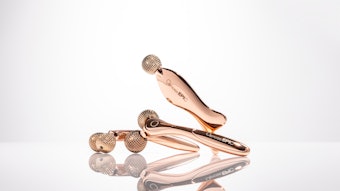Following are vitamin statistics and international vitamin trends from Euromonitor International. To read the full article on vitamins and the spa, check out Samatha Chmelik's article from the December 2010 issue.
U.S. vitamin stats
Since 2004, the top five dietary supplements by retail value sales in U.S. dollars have remained remarkably constant; calcium supplements and minerals supplements remained No. 1 and No. 2, respectively. Fish oils, glucosamine and probiotic supplements fluctuated in their top five rankings throughout the 2004–2009 time period. Co-enzyme Q10, eye-health supplements, garlic, ginkgo biloba, ginseng, protein powder and royal jelly all appeared in the remainder of the top 10 during the same time period. Global sales of vitamins are also unvarying during the 2004–2009 time period.
Multivitamins are the No. 1 type of vitamin sold, with sales usually four times that of the No. 2 vitamin—vitamin B. Vitamin C is in third place, with triple the sales of fourth place vitamin E. In recent years, vitamins A and K have alternated for fifth place, while vitamin D lags in seventh place. However, vitamin D had the highest growth rate in 2009 at 38.7%. Vitamins are flexible, popular products, valued as supplements and ingredients.
International vitamin trends
Consumers throughout the world are still most familiar with vitamins and dietary supplements as pills, and the marketing or positioning of supplements is a critical factor in their success. Local attitudes toward health and beauty drive that marketing or positioning.
France, the exemplar country for fashion and beauty, prefers vitamins and dietary supplements positioned for specific health problems, rather than products marketed as general beauty solutions. Probiotics for the immune system and cranberries for urinary tract problems enjoyed ongoing double-digit current value growth in 2009. The aging French population was also attracted to joint-health products, such as glucosamine and shark cartilage. Consumers rejected products that were simply promoted for beauty. For example, Laboratoire Oenobiol enjoyed impressive growth in its dermo-cosmetic products, while the sales of its brands with a beauty positioning declined.
U.S. consumers prefer medically functional dietary supplements. Fish oils, co-enzyme Q10, eye-health supplements and probiotics remain the most popular dietary supplements. Fish oils and co-enzyme Q10 grew by 28% and 14% respectively in 2009 during the previous year. Both products benefited from an aging U.S. population. In 2004, omega-3 compounds received permission to show qualified health-label claims from the U.S. Food and Drug Administration (FDA), linking omega-3 to a lower risk of cardiovascular illness. Fish oils have continued to receive favorable media coverage for cardiovascular issues. Co-enzyme Q10 also benefited from several well-documented heart-related benefits and is necessary for consumers taking prescription statins, which deplete the body’s natural co-enzyme Q10 levels. These two supplements still have a household penetration of less than 15%, meanwhile, leaving significant room for growth.
Brazilian consumers are also wary of products marketed as beauty supplements. They typically prefer products positioned as helping bone, digestive or heart health. Natura and Avon invested in multivitamins that aimed to promote beauty from the inside; however, sales were not significant and the products were discontinued. Companies continued to try to use beauty as a marketing concept. Ferrosan A/S, a partnership between L’Oréal and Nestlé SA, introduced Imedeen, a combination of vitamins and dietary supplements, and positioned it as beauty product that rejuvenates the skin and minimizes the effects of aging, and the concepts of rejuvenation and anti-aging resonated with Brazilians. Nutrilatina Laboratórios then introduced Rennouve, an anti-aging multivitamin and rejuvenating dietary supplement. Both products are still on the market.
The merging of health and beauty is popular in Greece, based on the logic that a person who is healthy is beautiful. Beauty from within is the fastest growing trend in promoting dietary supplements, such probiotic supplements and fish oils. Combination dietary supplements promote skin care, nail care and hair loss products as beauty supplements. Examples include Innéov Anti-Age Firmness or Solgar Skin Nails & Hair. Glucosamine products are marketed for their cosmetic benefits rather than their joint health. Researchers at Procter & Gamble discovered that glucosamine blocks the production of melanin, a causal factor in the development of brown age spots. New product launches are expected to continue focusing on the beauty benefits of products with cosmetic aspects such as hair loss, skin care, nail care and cellulite treatment. Pure beauty positioning is most popular in Asia, especially for skin care products. In China, vitamins C and E are especially prized as beauty products. Consumers believe that vitamin C whitens the skin and vitamin E is a beauty-creating antioxidant. In Japan, consumers turn to vitamins C, B and E to strengthen skin and fight aging. Vitamin C grew by 5% in 2009 because consumers believe it helps the body manufacture collagen and strengthens the immune system.
Even in countries where beauty is not accepted as a marketing or positioning tactic, consumers still take certain vitamins or dietary supplements for beauty purposes. For example, Egyptian women are quite passionate about their hair and will spend money on products to enhance its texture and style. They believe that vitamin B promotes healthy hair, driving a 14% growth rate in vitamin B sales in 2009. Collagen tonics are increasing in popularity with Malaysia and Singapore consumers, who drink the tonics for beauty purposes.










